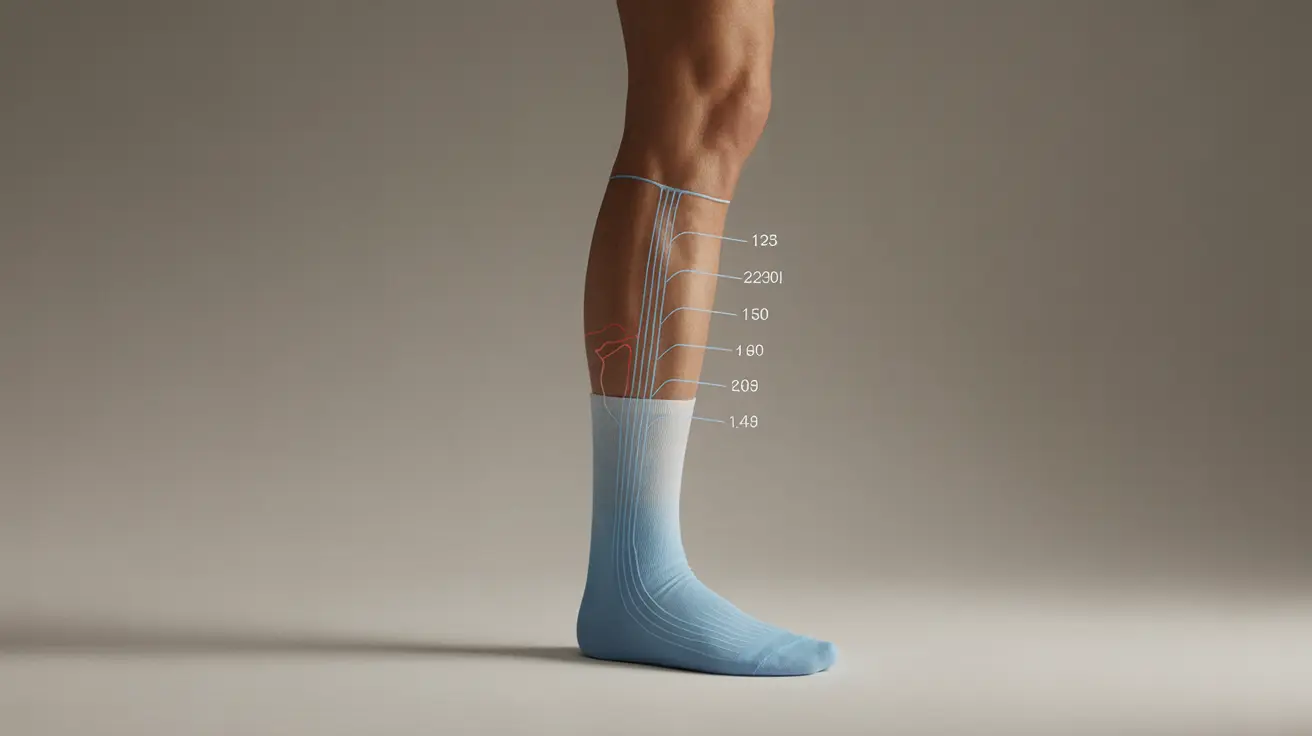Living with varicose veins can be uncomfortable and concerning, leading many people to seek effective solutions for managing their symptoms. Compression socks have emerged as a popular treatment option, but understanding their true effectiveness and proper use is crucial for achieving the best results.
In this comprehensive guide, we'll explore how compression socks work to address varicose veins, their benefits, and what you need to know to use them effectively. We'll examine the scientific evidence behind their use and provide practical guidance for those considering this treatment option.
How Compression Socks Work for Varicose Veins
Compression socks function by applying graduated pressure to your legs, with the strongest compression at the ankle that gradually decreases up the leg. This mechanical action helps support proper blood flow and reduces the pooling of blood in the veins.
- Encouraging blood to flow upward against gravity
- Preventing blood from flowing backward in the veins
- Reducing swelling in the legs and ankles
- Supporting muscle pump function during movement
Benefits of Using Compression Socks
Regular use of compression socks can provide several important benefits for those with varicose veins:
Immediate Symptom Relief
- Reduced leg swelling and heaviness
- Decreased aching and discomfort
- Improved energy levels during daily activities
- Less nighttime leg cramping
Long-term Management
- Prevention of symptom progression
- Reduced risk of complications
- Better circulation throughout the day
- Improved overall leg comfort during extended periods of standing or sitting
Choosing the Right Compression Level
The effectiveness of compression socks largely depends on selecting the appropriate pressure level for your specific condition:
Compression Levels Explained
- Mild (8-15 mmHg): For mild symptoms and prevention
- Moderate (15-20 mmHg): Most common for varicose veins
- Firm (20-30 mmHg): For severe symptoms
- Extra Firm (30-40 mmHg): Usually requires prescription
Proper Usage Guidelines
- Put them on first thing in the morning before swelling occurs
- Ensure proper fit without wrinkles or bunching
- Wear them consistently throughout the day
- Replace socks every 3-6 months or when elasticity diminishes
Frequently Asked Questions
Q: Do compression socks really reduce symptoms and swelling caused by varicose veins?
A: Yes, compression socks are clinically proven to reduce swelling and alleviate symptoms associated with varicose veins when worn regularly and properly fitted.
Q: Can wearing compression stockings prevent varicose veins from getting worse or developing?
A: While compression stockings can't completely prevent varicose veins, they can help slow their progression and reduce the risk of developing new ones by improving circulation and supporting vein function.
Q: How do compression socks work to improve blood flow in legs with varicose veins?
A: Compression socks apply graduated pressure that's strongest at the ankle and decreases up the leg, helping push blood upward and preventing it from pooling in the veins.
Q: Are compression stockings a cure for varicose veins or just a way to manage symptoms?
A: Compression stockings are not a cure for varicose veins but rather an effective management tool that can significantly reduce symptoms and prevent progression of the condition.
Q: What pressure level and fit are recommended for compression socks to be effective for varicose veins?
A: Most people with varicose veins benefit from moderate compression (15-20 mmHg), though some may need stronger compression (20-30 mmHg) based on severity. Proper fit is crucial - socks should be snug but not painfully tight.
Remember, while compression socks are an effective tool for managing varicose veins, it's important to consult with a healthcare provider to determine the best treatment plan for your specific situation.




